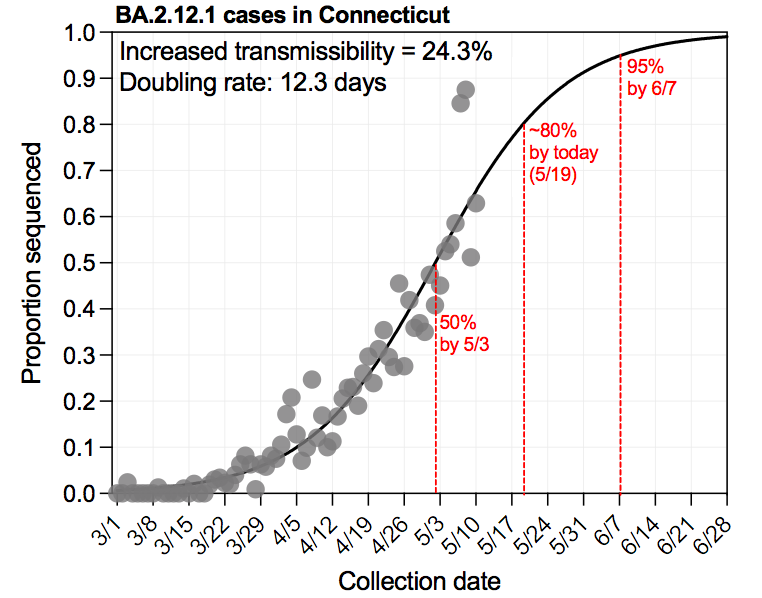🧬4/22 Connecticut #SARSCoV2 variant surveillance
@CovidCT | @jacksonlab | @CTDPH | @YaleSPH | @YaleWestCampus | @YNHH
- B.1.1.7 >60%
- Detected 2 B.1.1.7 + E484K (3 total)
- New CDC VOI list: B.1.526 + B.1.526.1, but not B.1.526.2
short 🧵 | Report 👇
covidtrackerct.com/variant-survei…
@CovidCT | @jacksonlab | @CTDPH | @YaleSPH | @YaleWestCampus | @YNHH
- B.1.1.7 >60%
- Detected 2 B.1.1.7 + E484K (3 total)
- New CDC VOI list: B.1.526 + B.1.526.1, but not B.1.526.2
short 🧵 | Report 👇
covidtrackerct.com/variant-survei…

2/8 Last week we saw a dip in the probably B.1.1.7 cases determined by TaqPath SGTF results. I showed how the sequencing tracked with the SGTF data, and that the dip was probably a blip...
https://twitter.com/NathanGrubaugh/status/1382799968277311493
3/8 That "blip" was confirmed: B.1.1.7 📈 this week in both the sequencing and TaqPath SGTF data (shown 👇). While we expect B.1.1.7 to continue this trend until it dominates (like in the UK), the good news is that we are seeing a reduction in both B.1.1.7 and non-B.1.1.7 cases. 

4/8 This week we sequenced 2 B.1.1.7 samples + the E484K mutation. They are unrelated to each other, likely representing independent emergences/introductions into CT. So far this is not too alarming given their low frequencies, but something that we keep an eye on. 

5/8 This week the CDC updated their VOI list to include B.1.526.1, but not B.1.526.2. Their likely rationale is that B.1.526.1 has the L542R mutation, which the CDC recently classified as a "Substitution of Therapeutic Concern", along with E484K.
cdc.gov/coronavirus/20…
cdc.gov/coronavirus/20…

6/8 Before the update we were lumping B.1.526 + B.1.526.1 + B.1.526.2 as "B.1.526", which is still reflected as such in our main frequency plot (we'll update this for next week).
👇 is a breakdown of the B.1.526 lineages showing their decline in recent weeks.
👇 is a breakdown of the B.1.526 lineages showing their decline in recent weeks.

7/8 This week we added a new section on "SARS-CoV-2 mutations of interest". The figure shows the temporal frequencies of Spike E484K on all lineages, and you can find similar plots for several other mutations by following the links. 

8/8 This week I'd like to recognize 🌟 PhD student @MaryPetrone10 for establishing the Illumina COVIDseq protocol in our lab that significantly expanded our capacity. She's also leading several projects, e.g. comparing the 💪 of B.1.1.7 vs B.1.526 in CT.
grubaughlab.com/team/mary-petr…
grubaughlab.com/team/mary-petr…
• • •
Missing some Tweet in this thread? You can try to
force a refresh















